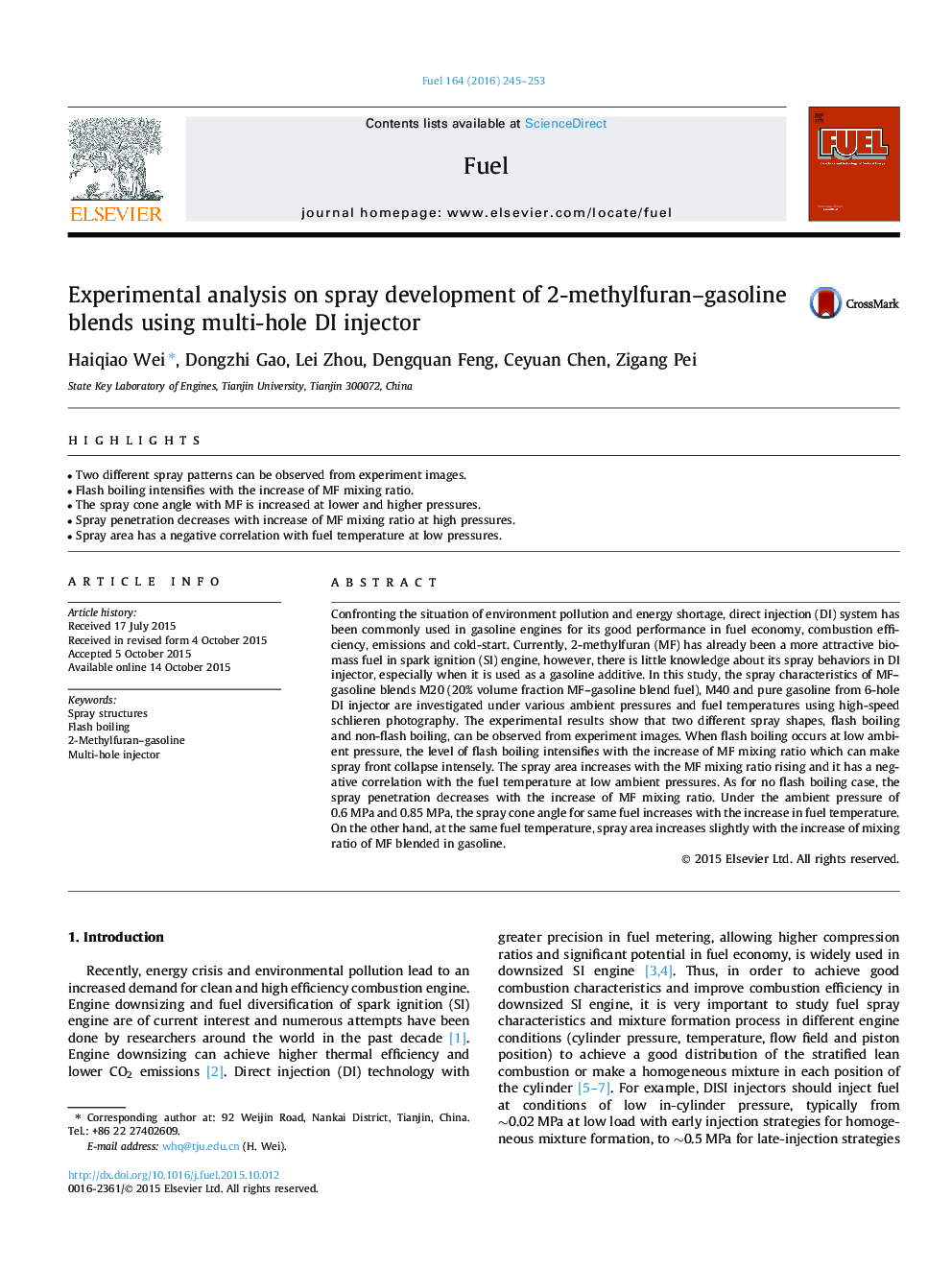| Article ID | Journal | Published Year | Pages | File Type |
|---|---|---|---|---|
| 205395 | Fuel | 2016 | 9 Pages |
•Two different spray patterns can be observed from experiment images.•Flash boiling intensifies with the increase of MF mixing ratio.•The spray cone angle with MF is increased at lower and higher pressures.•Spray penetration decreases with increase of MF mixing ratio at high pressures.•Spray area has a negative correlation with fuel temperature at low pressures.
Confronting the situation of environment pollution and energy shortage, direct injection (DI) system has been commonly used in gasoline engines for its good performance in fuel economy, combustion efficiency, emissions and cold-start. Currently, 2-methylfuran (MF) has already been a more attractive biomass fuel in spark ignition (SI) engine, however, there is little knowledge about its spray behaviors in DI injector, especially when it is used as a gasoline additive. In this study, the spray characteristics of MF–gasoline blends M20 (20% volume fraction MF–gasoline blend fuel), M40 and pure gasoline from 6-hole DI injector are investigated under various ambient pressures and fuel temperatures using high-speed schlieren photography. The experimental results show that two different spray shapes, flash boiling and non-flash boiling, can be observed from experiment images. When flash boiling occurs at low ambient pressure, the level of flash boiling intensifies with the increase of MF mixing ratio which can make spray front collapse intensely. The spray area increases with the MF mixing ratio rising and it has a negative correlation with the fuel temperature at low ambient pressures. As for no flash boiling case, the spray penetration decreases with the increase of MF mixing ratio. Under the ambient pressure of 0.6 MPa and 0.85 MPa, the spray cone angle for same fuel increases with the increase in fuel temperature. On the other hand, at the same fuel temperature, spray area increases slightly with the increase of mixing ratio of MF blended in gasoline.
